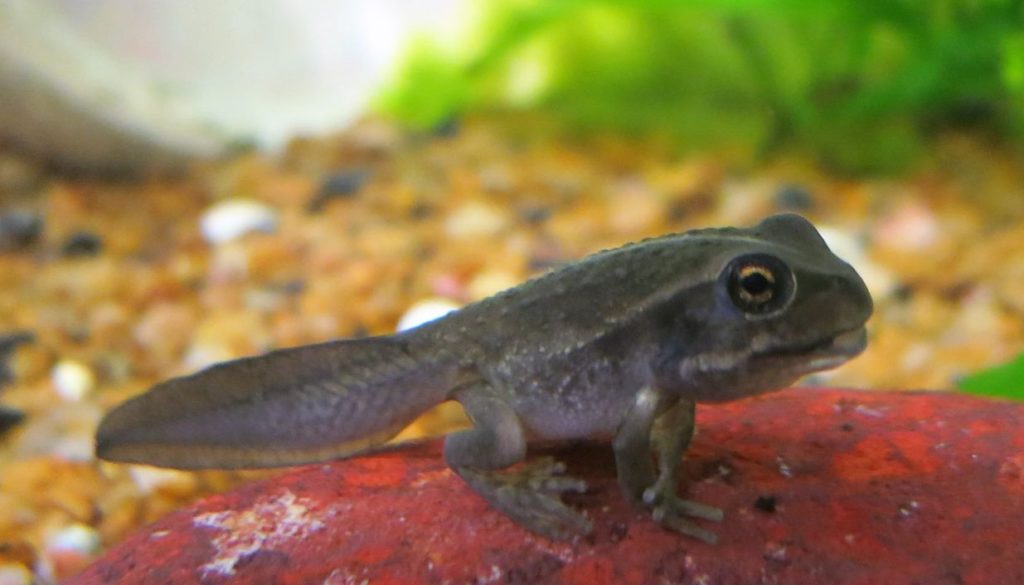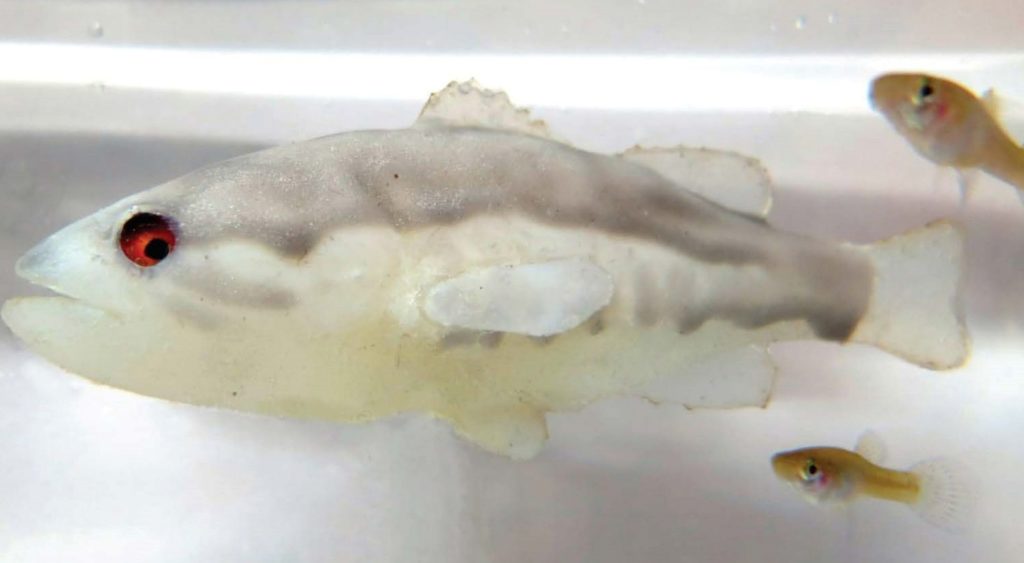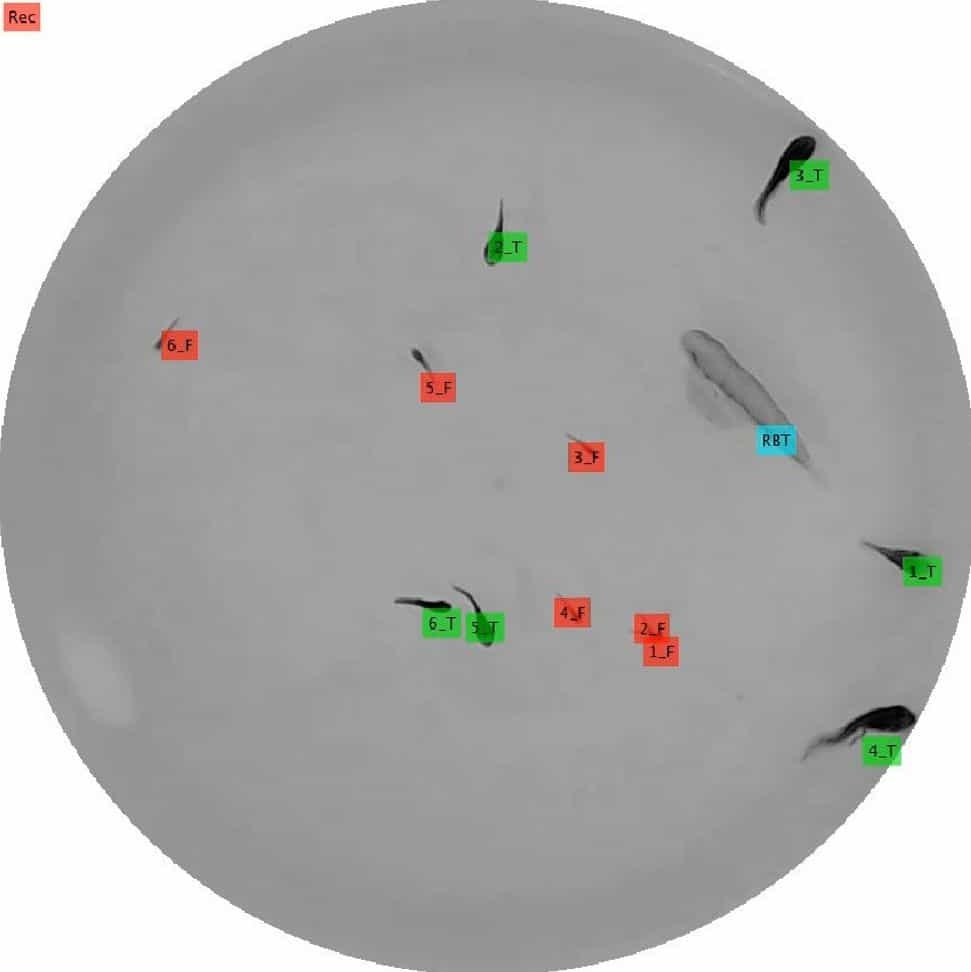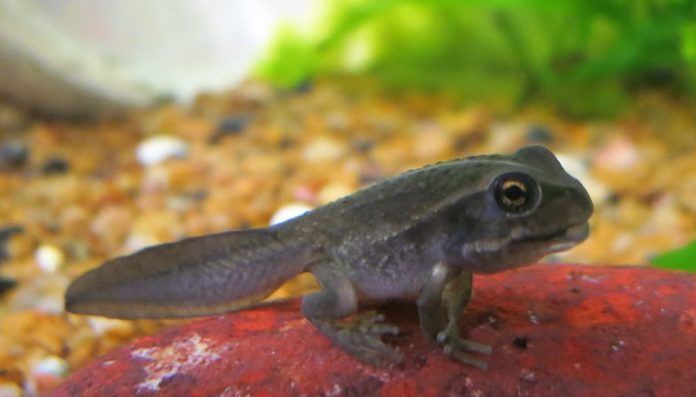The researchers created a robot to drive away mosquitofish, an invasive species that eats the tails of freshwater fish and tadpoles, leaving the native animals to perish while feasting on the eggs of other fish and amphibians.
The invasive mosquitofish (Gambusia holbrooki) eats the tails of freshwater fish and tadpoles, causing the native species to die while feasting on the eggs of other fish and amphibians. Researchers used a robot to scare mosquitofish away in a study published in the journal iScience, revealing how fear affects their behavior, physiology, and fertility—and how it could help reverse the tide against invasive species.
The international team, which included biologists and engineers from Australia, the United States, and Italy, took inspiration from the invasive fish’s natural predator, the largemouth bass (Micropterus salmoides). They created a robotic fish that has the same appearance as a real predator and moves in the same way. Thanks to computer vision, the robot strikes when it sees mosquitofish approaching tadpoles of an Australian species (Litoria moorei) that is endangered by mosquitofish in the wild. The mosquitofish were scared and worried, and they displayed anxious behaviors, as well as weight loss, changes in body form, and a decrease in fertility, all of which hampered their survival and reproduction.

“Mosquitofish is one of the 100 world’s worst invasive species, and current methods to eradicate it are too expensive and time-consuming to effectively contrast its spread,” said Giovanni Polverino, first author.
“This global pest is a serious threat to many aquatic animals. Instead of killing them one by one, we’re presenting an approach that can inform better strategies to control this global pest. We made their worst nightmare become real: a robot that scares the mosquitofish but not the other animals around it.”
Mosquitofish tended to stick closer together and spend more time near the middle of the testing arena when the artificial fish were present, cautious to venture into unfamiliar territory. They also swam faster than those who hadn’t met the robot, with more frequent and acute turns. Fear persisted once they were away from the robot and back in their own aquaria. The terrified fish became less active, ate more, and froze for longer periods of time, displaying signals of worry that lasted for weeks after their last interaction with the robot.

The presence of the robot was a good thing for the tadpoles that the mosquitofish generally eat. While the mosquitofish is a visual species that uses its eyes to investigate its surroundings, tadpoles have poor eyesight and cannot see the robot clearly.
“We expected the robot to have neutral effects on the tadpoles, but that wasn’t the case,” added Polverino.
Because the mosquitofish’s behavior had been altered by the robot, the tadpoles no longer had predators on their tails and were more willing to venture out into the testing arena.
“It turned out to be a positive thing for tadpoles. Once freed from the danger of having mosquitofish around, they were not scared anymore. They’re happy.”
The study discovered that the mosquitofish spent more energy escaping than reproducing after five weeks of brief contacts with the robot. Male fish evolved slim, streamlined bodies with stronger muscles towards the tail, allowing them to cut through the water when escaping. Male fish had lower sperm counts, and females produced lighter eggs, both of which are alterations that are likely to jeopardize the species’ overall survival.

“While successful at thwarting mosquitofish, the lab-grown robotic fish is not ready to be released into the wild,” said senior author Maurizio Porfiri.
The crew will still have to deal with technical difficulties. They want to test the technology in small, clean pools in Australia, where two rare fish are threatened by mosquitofish, as a first step.
“Invasive species are a huge problem worldwide and are the second cause for the loss of biodiversity,” added Polverino. “Hopefully, our approach of using robotics to reveal the weaknesses of an incredibly successful pest will open the door to improve our biocontrol practices and combat invasive species. We are very excited about this.”
Source: 10.1016/j.isci.2021.103529
Image Credit: Vrishin Soman
You were reading: Scary fish robots could help us control invasive species
